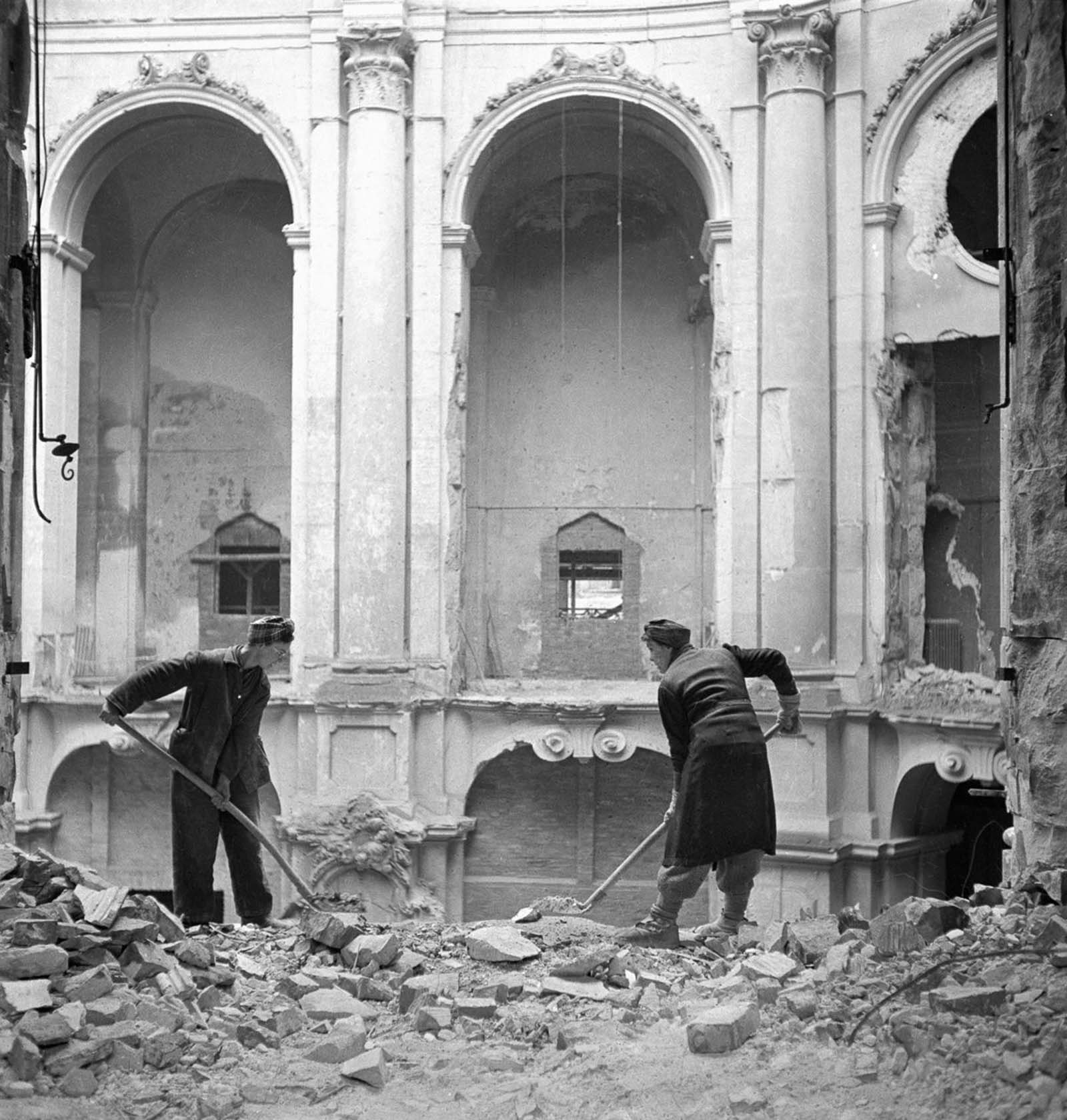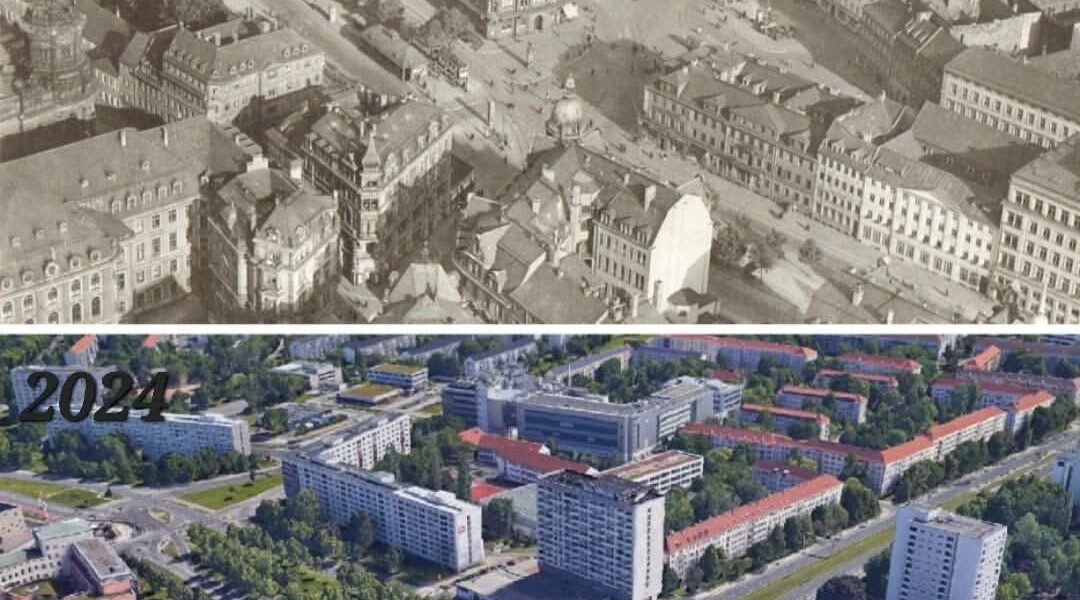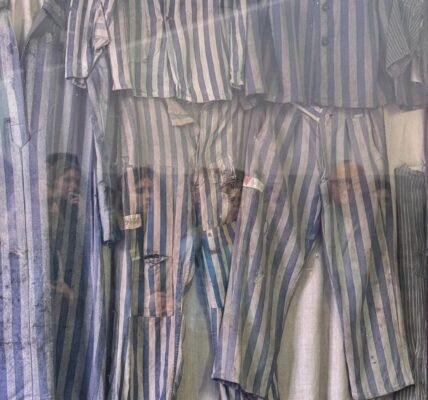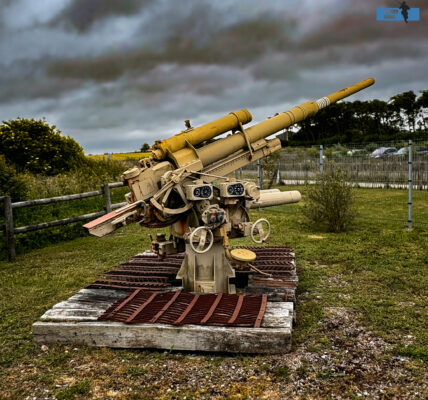Reconstruction of Dresden after the terrible bombing raids at the end of the Second World War, 1945–1970

Dresden in March 1945.
In the final winter of World War II, Dresden in East Germany was reduced to rubble. Tens of thousands lost their lives, sparking a bitter debate about whether the attack was justified.
Dresden was the capital of the German federal state of Saxony and was located on the Elbe River. It was a cultural center with famous landmarks such as the Frauenkirche and was called the Florence of the Elbe.
The city’s population could largely only be estimated, as refugees flooded into the city shortly before the bombing as Soviet troops advanced east of the city. However, general estimates suggest that the population at the time of the bombing was over 650,000.

The destroyed city seen from the town hall. 1945.
In early 1945, Allied commanders met to plan “Thunderclap,” a new plan for the strategic bombing of Germany, particularly to support the advance of Soviet troops.
They argued that by area bombing large cities in East Germany, Soviet troops could exploit the resulting confusion and thus hinder the movement of German troops from the west to the target cities.
On 27 January 1945, Sir Archibald Sinclair of the RAF, in light of the conclusion of the Allied Joint Intelligence Command that the Germans could reinforce the Eastern Front with half a million men (up to 42 divisions), sent a recommendation to Churchill to bomb Berlin, Dresden, Chemnitz, Leipzig or other large cities with available resources in order to hamper efficient enemy movements, should such reinforcements be ordered from Berlin.

A view from the town hall of the cleared former city center. 1955.
The bombing of Dresden began on the night of 13-14 February, when 796 British Lancaster and 9 Mosquito aircraft were deployed and dropped 1,478 tons of explosives and 1,182 tons of incendiary bombs in the first bombing raid and 800 tons of bombs in the second raid.
The incendiary bombs contained flammable chemicals such as magnesium, phosphorus or petroleum jelly/napalm.
It was claimed that the extreme temperatures inside the buildings caused by the massive fires created air currents that sucked people fleeing into the burning buildings.
Three hours later, 529 Lancaster bombers dropped 1,800 tons of bombs. The next day, 311 American B-17 bombers dropped 771 tons of bombs, while the accompanying Mustang fighters strafed traffic (without distinction between military and civilian) on the streets, causing further chaos.

A statue of Martin Luther lies toppled in front of the ruins of the Frauenkirche. 1945.
She’s carrying a bundle in her arms, it’s her baby. She runs, she falls, and the child flies in an arc into the fire… Insane fear grips me, and from then on, I repeat a simple phrase to myself: “I don’t want to burn.”

The ruins of the Frauenkirche and the dome of the Academy of Fine Arts.
Lothar Metzger, another Dresden resident who was only nine years old at the time, remembers: “ We didn’t recognize our street anymore.”
Fire, only fire, wherever we looked. Our fourth floor no longer existed. The destroyed remains of our house were burning.
Vehicles and carts filled with refugees, people, and horses were burning in the streets; everyone was screaming and shouting in mortal fear.
I saw injured women, children, and elderly people searching for a way through ruins and flames… All the while, the hot wind of the firestorm drove people back into the burning houses from which they were trying to escape. I can’t forget these horrific details. I will never forget them.

Dresden in ruins. 1945.
The bombing raids used by the Allies were aimed at the total destruction of the buildings: the high-explosive bombs first exposed the wood of the buildings, then incendiary bombs set the wood on fire, and finally various explosives hampered the fire-fighting efforts.
The consequences were devastating. Of the 28,410 houses in Dresden’s city center, 24,866 were destroyed, many of them schools, hospitals, and churches.
The death toll is estimated at between 25,000 and over 60,000 (the official German report speaks of an estimated 25,000 and 21,271 registered burials).
After the end of World War II, Dresden’s survivors began the daunting task of cleaning up and rebuilding their city. Volunteers spent years clearing and transporting the rubble by hand.

Residents ride a tram through the city’s rubble. 1946.
Many of the city’s important historic buildings were reconstructed, including the Semper Opera House and the Zwinger Palace. However, the city’s leadership opted to rebuild large parts of the city in the “socialist modern” style. This was done partly for economic reasons, but also to distance itself from the city’s past as the royal capital of Saxony and a stronghold of the German bourgeoisie.
Some ruins of churches, royal houses and palaces, such as the Gothic St. Sophia Church, the Albert Theater or the Wackerbarth Palace, were not repaired but razed to the ground by the Soviet and East German authorities in the 1950s and 1960s.
The Frauenkirche, arguably the city’s central landmark, was only rebuilt 60 years after the war. Compared to West Germany, the majority of historic buildings survived.

Volunteers spend a Sunday morning clearing rubble. 1946.

Propaganda chief Heinz Grunewald, Mayor Walter Weidauer, and architect Dr. C. Herbert discuss plans for rebuilding the city. 1946.

Gustav and Alma Piltz help clear the rubble. 1946.

Gustav and Alma Piltz help clear the rubble. 1946.

Women clear rubble from the Zwinger Gallery. 1946.

Women clear rubble from the Zwinger Gallery. 1946.
Workers build a scale model of Dresden as it was supposed to look in 1958 after its reconstruction by the Russian occupying forces. 1946.
Volunteers clear rubble on a Sunday morning. 1946.
Reconstruction of Dresden. 1946.

Women pass bricks on a destroyed building. 1946.
People clear rubble from the ruins of the Frauenkirche. 1952.

Dresden in 1956.

Sheep graze near the ruins of the Frauenkirche. 1957.

Dresden in 1961.

A model of the planned development in the city center. 1969.




